
by Dorothy C. Lee | Jan 4, 2016

A Win-Win Super Bowl Party
Get defensive about your health. These easy-to-tackle recipes are just as tasty, but lower in fat and calories than typical game-day fare. It’s a Win-Win situation.
Skip the six-foot-long sub sandwich usually drenched in mayonnaise. Instead, serve a soup and sandwich smorgasbord with a variety of low-fat cheeses, whole grain breads, fresh, low-sodium cold cuts, and lots and lots of fresh vegetables. Serve soups that are hearty and full of vegetables or grains.
Swap calorie-laden soft drinks with 100% fruit juice or vegetable juice. Prepare mock cocktails using half juice and half seltzer water for a healthy, refreshing beverage.
Set up a make-your-own sundae bar. Use low-fat, protein-rich Greek yogurt and add low-fat granola and fresh or frozen fruit like strawberries, blueberries, even dried fruit. Top off yogurt sundaes with nuts.
Replace chips with vegetable sticks or fruit, or try making your own tasty pita chips. Recipe follows and it only takes a few minutes. Serve a store-bought salsa or a homemade bean dip (see recipe) with carrots, celery, red pepper strips, and cucumbers instead of high-fat dips and salty chips.
If you are going to serve dessert, opt for fruit—fresh, frozen, or canned in its own juice, or there are sugar-free options.
These game day decisions will help you develop a winning game plan!
Garlic & Herb Pita Chips
4-6 whole wheat pitas
2 tablespoons olive oil
1 teaspoon Italian seasoning
½ teaspoon garlic powder
¼ teaspoon salt
Coat 2 large baking sheets with non-stick cooking spray.
Cut pitas into 8 wedges each and separate each wedge at the fold.
Place the pita wedges in an even layer on the baking sheets.
Brush wedges with oil and sprinkle with Italian seasoning, garlic powder, and salt.
Bake at 350°F for 6 to 10 minutes or until golden brown.
May be baked ahead of time and stored in an airtight container for up to 4 days.
Pinto Bean Salsa Dip
1 (approximately 15-ounce) can pinto beans, drained and rinsed, or
1½ cups cooked dried beans
1 cup shredded cheese
½ to 1 cup chunky salsa
1 to 2 tablespoons chopped onion (optional)
¼ to ½ teaspoon chili powder or to taste (optional)
Mash beans with a fork. Mix in cheese. Stir in enough salsa until mixture is desired consistency for dipping. Add onion and seasoning as desired. Serve cold or cook, stirring, over medium heat until the cheese melts and the mixture is well-blended and hot (about 5 minutes).
For further information contact:
Dorothy C. Lee, C.F.C.S.
UF IFAS Extension Escambia County
3740 Stefani Road
Cantonment, FL 32533-7792
(850) 475-5230
dclee@ufl.edu
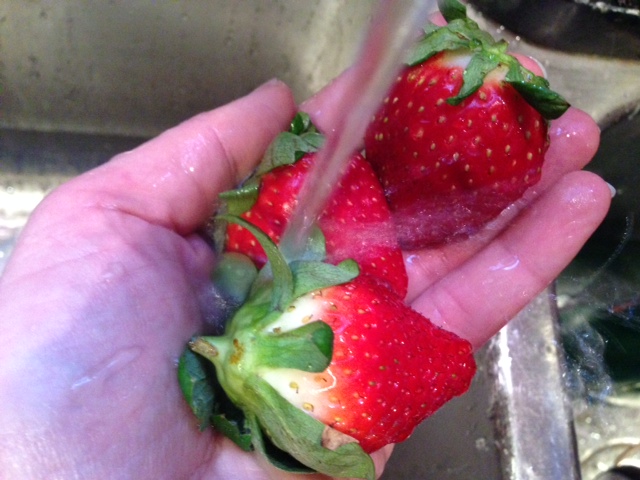
by Amy Mullins, PhD, RDN | Aug 24, 2015
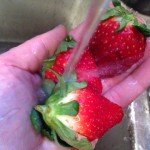 Are your kids famished when they get home from school? Kids often hit the kitchen right when they get home and begin the search for something to eat. After being at school all day, it’s inevitable they will bring a host of germs into the house (and into the kitchen). These germs, or microorganisms, can contaminate your kitchen and make your child sick if they are not kept in check.
Are your kids famished when they get home from school? Kids often hit the kitchen right when they get home and begin the search for something to eat. After being at school all day, it’s inevitable they will bring a host of germs into the house (and into the kitchen). These germs, or microorganisms, can contaminate your kitchen and make your child sick if they are not kept in check.
How can kids prepare after-school snacks in the safest way?
Establishing good habits and putting good practices in place can help keep your kids from getting a foodborne illness. The USDA recommends the following:
- Keep all items such as books, backpacks, and sporting equipment on the floor and off of kitchen counters and tables.
- Wash hands first when coming home from school, and again before making and eating a snack. Hands carry lots of germs and can easily contaminate everything they come in contact with.
- Wash fruits and vegetables under running water before eating them.
- Read more about “Food Safety After School”
What are some good after-school snacks?
Choosing easy and healthy snacks for kids can be a real challenge, especially when dealing with picky eaters. Typically, kids feel more independent when they have options and can control what they eat. Parents can set their children up for success by having a variety of healthy snack choices that are easily accessible. Find some great snacking ideas here. Keith Williams, PhD, director of the feeding clinic at the Penn State Hershey Children’s Hospital, recommends having plenty of fruits and vegetables already washed, cut up, and within easy reach of children. Keep the “sometimes” foods out of reach so you can control when your child eats them. “The goal is to make it easier to obtain the healthy snacks you want your child to eat and more difficult to obtain the foods you don’t want him to eat,” says Williams. Read more about “Breaking Your Gradeschooler’s Unhealthy Food Habit” here.
Establishing healthy habits from an early age can transition children into healthier adults. Learn more about making smart choices by visiting http://www.choosemyplate.gov/kids/
by Angela Hinkle | Oct 23, 2012
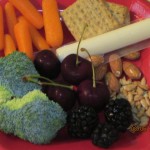 Those are familiar words for most of us with kids. Though they are not really starving, most children do need a little afternoon boost when they come home from school. It may have been hours since lunch and dinner won’t be ready for a while. A healthy snack is usually just the right answer.
Those are familiar words for most of us with kids. Though they are not really starving, most children do need a little afternoon boost when they come home from school. It may have been hours since lunch and dinner won’t be ready for a while. A healthy snack is usually just the right answer.
When planning afterschool snacks, think of them as the fourth meal of the day or as a mini-meal. Hopefully, you wouldn’t plan a dinner of just potato chips or candy, so why plan snacks that way? Use the food groups from MyPlate to help you plan healthy, ready-to-eat snacks from each food group.
- Fruit – Have a bowl of fruit on the counter always at the ready. Keep a pre-cut fruit salad or peeled oranges in the refrigerator. Make 100% fruit juice popsicles.
- Vegetables – Keep cut up veggies available in plastic zippered bags with kid-friendly dips like ranch dressing to go with them.
- Protein – A variety of nuts and seeds is always good to have on hand. Hard boiled eggs offer great protein power as well.
- Dairy – String cheese and yogurt cups are terrific dairy sources.
- Whole Grains – Whole grain crackers, popcorn, and granola mix add plenty of crunch.
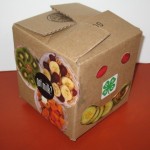 “Easy” and “available” are the key planning points to remember. Designate a snack area in the refrigerator or pantry. Decorate a personalized snack box for each child filled with favorite healthy snacks. A healthy variety of snacks always at the ready holds our child’s interest, provides the much needed energy to close the gap between lunch and dinner, provides nutrients they may not have gotten from other meals in the day, and keeps them from … well, starving.
“Easy” and “available” are the key planning points to remember. Designate a snack area in the refrigerator or pantry. Decorate a personalized snack box for each child filled with favorite healthy snacks. A healthy variety of snacks always at the ready holds our child’s interest, provides the much needed energy to close the gap between lunch and dinner, provides nutrients they may not have gotten from other meals in the day, and keeps them from … well, starving.
by Angela Hinkle | Jun 1, 2012
School’s out! One way to get creative with all this extra time and to eat nutritiously is to make and eat healthy snacks. Like an arts and crafts project, making a snack can be a great summertime activity. Bonus: the kids get to eat their artwork and you get to sneak nutritious foods into their day for a healthy diet.
Some works of art need the following elements:
- Foundation – slices of whole wheat bread, tortillas, English muffins, lettuce leaves, rice cakes, zucchini or cucumber rounds, apple or pineapple slices.
- Glue – peanut butter, low-fat cream cheese, cheese spread, hummus, refried beans, low-fat yogurt, jam, pizza sauce, or low-fat ranch dressing.
- Bling – seeds, nuts, grapes, raisins, match stick carrots, olives, beans, low-fat granola, diced fruits and veggies.
Start from the foundation and work up to the bling. Create faces, animals, or landscapes. Let the plate be your canvas. It’s a great way to try a new food or sample a food prepared in a totally different way.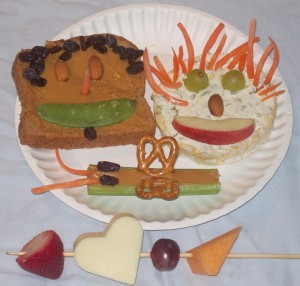
For other works of art, use toothpicks, skewers, popsicle sticks, or edible pretzel rods to make shish kabobs. Cut out cheese shapes with small cookie cutters and add to the stick alternating with cut-up fruits and vegetables. Make a beautiful edible bouquet.
Kids also are more likely to enjoy new foods if they are served in fun containers. Try using mugs, champagne glasses, ice cream cones, or party hats.
Be sure to include nutritious foods from all the food groups as your artists create throughout the summer: load up on fruits and vegetables, incorporate whole grains, and go lean on the dairy and protein.
No sitting around loading up on unhealthy “junk” foods out of boredom this summer. The time for healthy edible snack art is now.



 Are your kids famished when they get home from school? Kids often hit the kitchen right when they get home and begin the search for something to eat. After being at school all day, it’s inevitable they will bring a host of germs into the house (and into the kitchen). These germs, or microorganisms, can contaminate your kitchen and make your child sick if they are not kept in check.
Are your kids famished when they get home from school? Kids often hit the kitchen right when they get home and begin the search for something to eat. After being at school all day, it’s inevitable they will bring a host of germs into the house (and into the kitchen). These germs, or microorganisms, can contaminate your kitchen and make your child sick if they are not kept in check.

